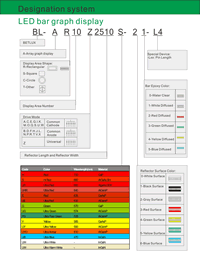Arrow display 41.0*63.8mm
Series No:
Weight:(g/pcs)
Dimension:(mm)
Specification:
Inquiry
Description:
LED light bar(Rectangular,41*63.8mm)
Arrow display
Innovative Navigation: Unveiling the Arrow LED Display 41.0*63.8mm
In the realm of electronic displays, the Arrow LED Display measuring 41.0*63.8mm has emerged as a crucial component in guiding individuals through various environments, most notably in elevators and lifts. This detailed exploration focuses on the features, applications, and the multifaceted benefits of utilizing such a display, enriched by case studies and user testimonials. Aimed at electronics manufacturers, engineers, purchasers, and administrators, this article delves deep into how these displays are revolutionizing the user experience in elevator systems and beyond.
Key Features of the 41.0*63.8mm Arrow LED Display
The Arrow LED Display of 41.0*63.8mm dimensions boasts several key features that set it apart from conventional display technologies. This section outlines its unique characteristics, including superior brightness, energy efficiency, and durability. The discussion extends to the display’s compatibility with modern elevator systems, emphasizing its role in enhancing user navigation and safety.
Versatile Applications: Beyond the Elevator
While primarily utilized in elevator systems, the versatility of the 41.0*63.8mm Arrow LED Display finds applications in various sectors. This segment explores its use in public transportation, healthcare facilities, and commercial buildings, showcasing the display’s adaptability and effectiveness in improving directional guidance and information dissemination across diverse environments.
The Benefits of Adopting Arrow LED Technology
Transitioning to Arrow LED Displays offers a myriad of benefits, not only in terms of operational efficiency but also in environmental sustainability and aesthetic appeal. This part of the article details the advantages of using the 41.0*63.8mm displays, from reduced energy consumption and lower maintenance costs to enhanced visual clarity and user engagement.
Case Studies: The Impact of Arrow LED Displays
Real-world applications and the impact of the 41.0*63.8mm Arrow LED Displays are illustrated through engaging case studies. These narratives provide insights into how various organizations have successfully integrated these displays into their operations, resulting in improved user experiences, safety, and operational efficiency.
User Testimonials: Elevating Experiences with Arrow Displays
Gathering testimonials from those who have firsthand experience with the 41.0*63.8mm Arrow LED Displays offers a ground-level perspective on their effectiveness and appeal. This section compiles feedback from electronics manufacturers, engineers, and end-users, highlighting the displays’ reliability, ease of use, and the positive reception from the public.
Conclusion: Charting the Future with Arrow LED Displays
The 41.0*63.8mm Arrow LED Display signifies a leap forward in electronic display technology, promising to enhance the way we navigate through spaces. As this article concludes, it underscores the importance of embracing innovative solutions like Arrow LED Displays to meet the evolving needs of modern societies.
Call to Action
Electronics manufacturers, engineers, purchasers, and administrators are encouraged to consider the potential of the 41.0*63.8mm Arrow LED Displays. Embrace the future of navigation and information display technology today and elevate your projects to new heights.

Features
- Display Area Shape: Rectangular, providing a clear and distinct display.
- Arrow Display for Up and Down Directions: Ideal for indicating elevator or lift movement directions.
- Reflector Dimensions: Length of 41.0mm and width of 63.8mm.
- Suitable for Elevator/Lift Indicator Application: Specifically designed for use in elevators and lifts.
- Low Current Operation: Energy-efficient, leading to reduced power consumption.
- Wide Viewing Angle: Ensures the display is easily visible from various angles.
- Uniform Light Emitting Area: Offers consistent and even illumination across the display.
- Easily Mounted on P.C. Boards: Designed for straightforward integration into control systems.
- Flush Mountable: Can be installed in a way that it aligns perfectly with the surface.
- Excellent On/Off Contrast: Provides clear visibility when the display is active or inactive.
- Can be Used with Panels and Legend Mounts: Versatile in terms of mounting options.
- Categorized for Luminous Intensity: Ensures consistent brightness across units.
- Different Colors in One Unit Available: Offers flexibility in display colors, enhancing customizability.
- Standard: Black Face, White Segment: Classic and clear appearance for easy readability.
- RoHS Compliance: Meets environmental and safety standards.
Applications
- Elevator/Lift Position Indicators: To show the current position or movement direction of the elevator or lift.
- Building Directory Systems: As part of a larger directory or wayfinding system in commercial buildings.
- Transportation Systems: For indicating directions in subways, train stations, or airports.
- Public Information Displays: In public areas for directional guidance or status information.
- Industrial Control Panels: In industrial settings where direction indication is needed.
- Emergency Exit Signage: Can be adapted for use in emergency and evacuation signage systems.


Electrical-optical characteristics:
Article No | Emitting Color | Material | Peak Wavelength (nm) | Voltage typ. (v) | Voltage max. (v) | Luminous min | Luminous typ |
|---|---|---|---|---|---|---|---|
BL-AT5Z4163B |
ultra Blue |
InGaN/SiC |
470 |
4.2 |
25 |
70 |
|
BL-AT5Z4163D |
Super Red |
GaAlAs/DH |
660 |
2.2 |
50 |
84 |
|
BL-AT5Z4163E |
Orange |
GaAsP/GaP |
635 |
2.5 |
15 |
35 |
|
BL-AT5Z4163G |
Green |
GaP/GaP |
570 |
2.5 |
15 |
35 |
|
BL-AT5Z4163H |
Red |
GaP/GaP |
700 |
2.6 |
3 |
7 |
|
BL-AT5Z4163PG |
Ultra Pure Green |
InGaN/SiC |
525 |
4.2 |
30 |
85 |
|
BL-AT5Z4163S |
Hi Red |
GaAlAs/SH |
660 |
2.2 |
25 |
49 |
|
BL-AT5Z4163UB |
ultra Blue |
InGaN/SiC |
470 |
4.2 |
30 |
85 |
|
BL-AT5Z4163UE |
Ultra Orange |
AlGaInP |
630 |
2.5 |
40 |
98 |
|
BL-AT5Z4163UG |
Ultra Green |
AlGaInP |
574 |
2.5 |
25 |
70 |
|
BL-AT5Z4163UR |
Ultra Red |
GaAlAs/DDH |
660 |
2.2 |
120 |
168 |
|
BL-AT5Z4163UW |
Ultra White |
InGaN |
- |
4.2 |
120 |
||
BL-AT5Z4163UY |
Ultra Yellow |
AlGaInP |
590 |
2.5 |
40 |
98 |
|
BL-AT5Z4163Y |
Yellow |
GaAsP/GaP |
585 |
2.5 |
12 |
28 |
Package configuration & Internal circuit diagram
Partno description:
Related Information
Applied for: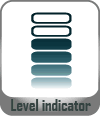
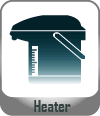
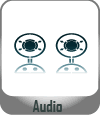

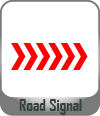
1. Application
The Seven Segment LED is widely applied for ordinary electronic equipment (such as office equipment,
communication equipment and household applications). Checking with BETLUX’s Sales in
advance for information on applications in which exceptional reliability is required, particularly
when the failure or malfunction of the LEDs may directly jeopardize life or health (such as in
aviation, transportation, traffic control equipment, medical and life support systems and safety
devices).
2. Storage
The storage ambient for the Seven Segment LED should not exceed 30℃ temperature or 70% relative humidity.
For extended storage out of their original packaging, it is recommended that the Seven Segment LEDs be stored
in a sealed container with appropriate desiccant, or in a desiccator with nitrogen ambient.
3. Cleaning
Avoid using any unspecified chemical solvent to clean LED . For example, Trichloroethylene, Chlorosen, Acetone, and Diflon S3MC.
Any cleaning method can only be taken under normal temperature in one minute or less if it is required.
Use water to clean the Seven Segment LED if necessary under room temperature
dry it immediately after that.
4.Forming
Any unsuitable stress applied to the epoxy may break bonding wires in LED
Any forming on lead pin must be done before soldering, not during or after soldering.
Avoid applying any stress to resin in order to prevent the epoxy fracture and break on bonding wire.
While forming, please use a tie bar cut or equivalent to hold or bend the pin.
2mm from the base of resin is the minimum distance for the place bending the lead pin.
Avoid bending the lead pin at the same point twice or more.
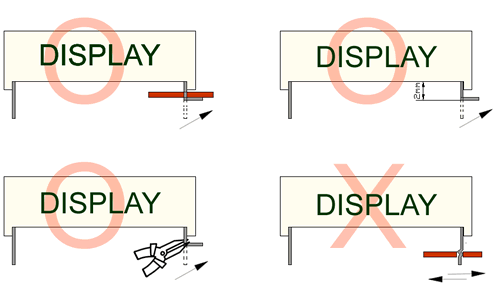
Soldering
When soldering, leave a minimum of 2mm clearance from the base of the base of the lens to the soldering point. Dipping the lens into the solder must be avoided.
Do not apply any external stress to the lead frame during soldering while the LED is at high temperature.
Recommended soldering conditions:
| IR Reflow Soldering (for SMD display) | Wave Soldering | Soldering Iron | |||
| Pre-Heat | 150-180°C | Pre-Heat | 100°C Max. | Temperature | 300°C Max. |
| Pre-Heat Time | 120sec Max. | Pre-Heat Time | 60sec Max. | ||
| Peak Temperature | 260°C Max. | SolderWave | 260°C Max. | Soldering Time | 3sec Max.(one time only) |
| Soldering Time | 10 sec Max. | Soldering Time | 5sec Max. | ||
Note: Excessive soldering temperature and/or time might result in deformation of the LED lens or failure of the LED
ESD(Electrostatic Discharge)
Static Electricity or power surge will damage the LED.
Suggestions to prevent ESD (Electrostatic Discharge):
n Use a conductive wrist band or anti-electrostatic glove when handling these LEDs
n All devices, equipment, and machinery must be properly grounded
n Work tables, storage racks, etc. should be properly grounded
n Use ion blower to neutralize the static charge which might have built up on surface of the LED’s
plastic lens as a result of friction between LEDs during storage and handling
ESD-damaged LEDs will exhibit abnormal characteristics such as high reverse leakage current,
low forward voltage, or “no light on” at low currents. To verify for ESD damage, check for “light on”
and Vf of the suspect LEDs at low currents.
The Vf of “good” LEDs should be>2.0V@0.1mA for InGaN product and >1.4V@0.1mA for AlInGaP
product.

LED dirve IC by Maxim Integrated
MAX6959 4½-Digit LED Display Driver
MAX6958 4½-Digit LED Display Driver
MAX6955 7-, 14-, 16-Segment LED Display Driver
MAX6956 LED Static Display Driver and I/O Port
MAX6954 7-, 14-, 16-Segment LED Display Driver
MAX6952 5 x 7 Matrix LED Display Driver
MAX6957 LED Static Display Driver and I/O Port
MAX6950 5-Digit LED Display Driver
MAX6951 8-Digit LED Display Driver
ICM7212 4-Digit LED Driver
ICM7212A 4-Digit LED Driver
ICM7212AM 4-Digit LED Driver
ICM7212M 4-Digit LED Driver
ICM7218A 8-Digit LED Driver
ICM7218B 8-Digit LED Driver
ICM7218C 8-Digit LED Driver
ICM7218D 8-Digit LED Driver
MAX7221 8-Digit LED Display Driver
MAX7219 8-Digit LED Display Driver
When selecting power for LED systems, it’s essential to understand several key parameters to ensure safe operation, longevity, and optimal performance. Here are some steps and considerations for LED power selection:
- Determine the Forward Voltage (Vf) of the LED(s):
Each LED has a forward voltage, which is the voltage at which the LED operates when the current is flowing through it. This value can typically be found in the LED’s datasheet.
- Determine the Forward Current (If) of the LED(s):
The forward current is the current at which the LED is designed to operate. Running an LED at higher than its rated current can reduce its lifespan and increase the heat it produces.
- Decide on the Configuration:
Series Configuration: When LEDs are connected in series, the forward voltages add up, but the current remains the same.
Parallel Configuration: When LEDs are connected in parallel, the forward voltage remains the same, but the currents add up. This configuration can be risky because if one LED fails or has a slightly lower forward voltage, it can cause the other LEDs to draw more current.
Calculate Total Power Requirements:
Power (W) = Total Forward Voltage (V) x Total Forward Current (A)
For example, if you have three LEDs connected in series, each with a forward voltage of 3V and a forward current of 20mA, the total power requirement would be:
Power = (3V + 3V + 3V) x 20mA = 9V x 0.02A = 0.18W
- Select an Appropriate Power Supply:
- Voltage Rating: The power supply voltage should match or slightly exceed the total forward voltage of your LED configuration.
- Current Rating: The power supply’s current rating should meet or exceed the total forward current of your LED configuration.
- Safety Margin: It’s a good practice to select a power supply that can provide at least 20% more power than your calculated requirement. This ensures the power supply isn’t operating at its maximum capacity, which can extend its life and ensure safer operation.
- Consider Additional Features:
- Dimming Capability: If you want to control the brightness of your LEDs, choose a power supply with dimming capabilities.
- Overcurrent and Overvoltage Protection: To protect your LEDs, select a power supply with built-in protection mechanisms.
- Thermal Management: Ensure that the power supply has adequate cooling, especially if it will be enclosed or in a location with limited airflow.
- Regulation and Efficiency:A power supply with good regulation will maintain a consistent voltage output despite variations in the load. High efficiency ensures minimal power is wasted as heat.
- Physical Size and Form Factor:Depending on where you plan to place the power supply, its size and shape may be critical factors.
In summary, when selecting power for LED systems, understanding your LED’s requirements and the configuration you plan to use is essential. Then, pick a power supply that meets those needs with some added safety margin, keeping in mind any additional features or constraints relevant to your project.
Here are some well-regarded brands in the industry:
- Mean Well: One of the most recognized brands in the LED power supply industry, Mean Well offers a wide range of products suitable for both indoor and outdoor applications. Their units often come with features like overcurrent protection, dimming capabilities, and high efficiency.
- Tridonic: A global leader in lighting technology, Tridonic offers LED drivers and power supplies that cater to various lighting solutions, from simple setups to advanced smart lighting systems.
- Philips Advance Xitanium: Philips is a well-known brand in the lighting industry, and their Xitanium series of LED drivers are known for reliability and performance. They cater to both indoor and outdoor LED applications.
- Osram: Another giant in the lighting industry, Osram offers a range of LED drivers and power supplies suitable for various applications, including architectural and street lighting.
- LIFUD: Specializing in LED drivers, LIFUD is known for its high-quality products that cater to both commercial and residential LED lighting solutions.
- MOSO: This brand offers a variety of LED drivers, especially for outdoor and industrial applications. Their products are known for durability and performance.
- TDK-Lambda: With a history in power electronics, TDK-Lambda offers a range of power supplies and LED drivers suitable for various applications, emphasizing reliability and advanced features.



